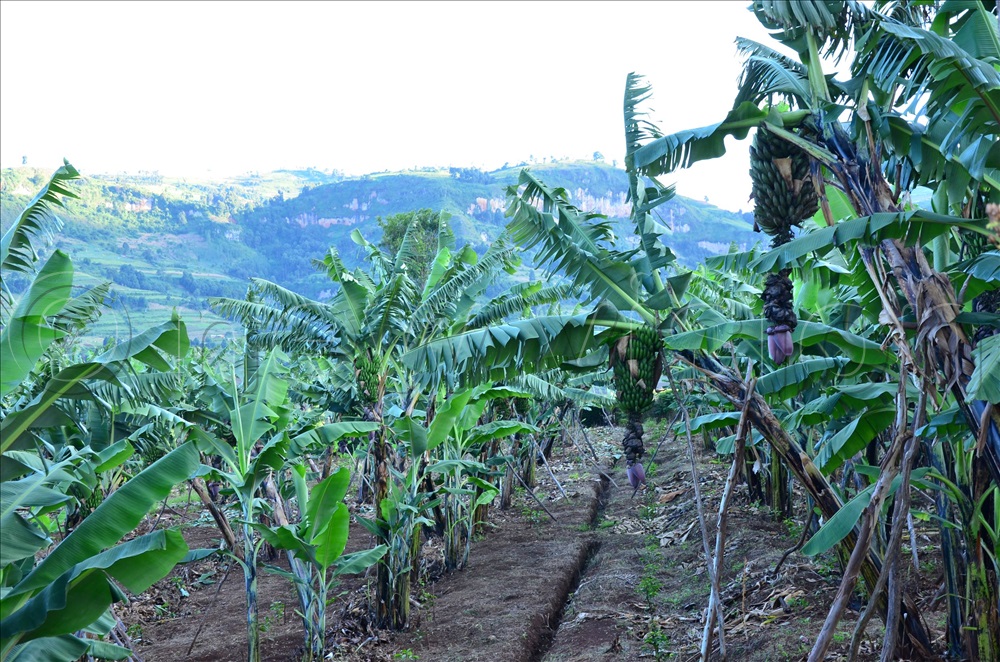In many parts of Uganda, especially in the highland regions, the steep terrain poses a challenge to farming. Yet, for determined farmers, these hills have become a source of opportunity.
Matooke, Uganda’s beloved staple food, is now being successfully grown on sloped land.
Isaac Malinga, a commercial farmer from Kapchorwa, is one such example. With over 10 acres of matooke flourishing on hilly ground, he has turned what many view as a disadvantage into a profitable venture, proving that, with the right approach, even hills can feed the nation.
“Hilly areas present challenges like soil erosion, strong winds, and water runoff,” Malinga explains.
“To manage this, I dig contour trenches along the slopes. These help in trapping water and preventing the soil from being washed away.”

Malinga also says mulching is important.
“Mulching with dry grass and banana leaves keeps the soil moist and reduces the impact of rain, which often leads to erosion on slopes.”
He plants vetiver grass and elephant grass along the boundaries to act as windbreaks and hold the soil in place.
To reduce losses during windy seasons, Malinga uses a spacing method that gives the banana plants room to grow strong roots and stabilise.
“I plant in pits measuring 3×3 feet and ensure proper spacing of about 3 metres between plants, this reduces competition for nutrients and increases resilience,” he says.
Denis Tushabe, another commercial matooke farmer from Rukiga district, agrees with Malinga.
“Terracing is very important; we dig terraces across the slope to slow water flow and allow moisture retention. I also apply organic manure from cow dung and compost to enrich the soil,” he says.
Tushabe notes that using disease-resistant varieties and regularly removing suckers helps maintain plant health on hilly land.





